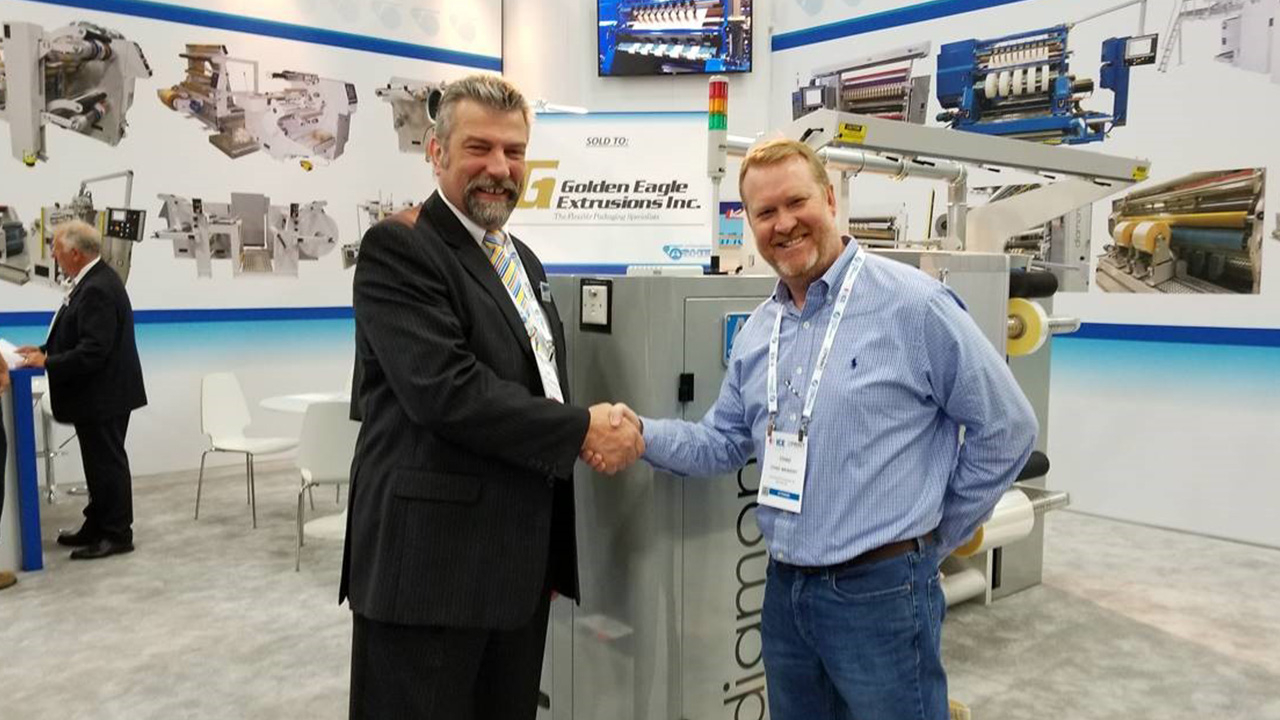Labelexpo hosts US Label Day
The day started with lunch and drinks, followed by small roundtable discussions focusing on five key aspects of the industry: innovation, business, technical, environment and workforce development. Fifteen minutes were dedicated to discuss each topic before the participants rotated to the next topic with new industry members to meet. The day had background music provided by one of the Summerfest bands, ‘Crank the Radio.’ After the discussions, attendees were given time to mingle with industry members and enjoy the music.
The day provided label converters and suppliers the chance to speak directly and hear the issues and concerns each faces in their business, as well as where they’re thriving.
Innovation
The innovation discussion began with the question, ‘What division in your company drives innovation?’ While the immediate answer was product development, upon further discussion, another key group emerged: sales, which proved to be the gateway between what the customer wants and what the company can provide, participants said. Innovation is always customer-driven, and the company should always listen to what the customer wants.
Millennials also were another demographic that provides sources of innovation. Millennials are familiar with consumer culture and the industry needs to innovate if they want to capture that age group. As millennial Taylor Buckthorpe from Colordyne said, ‘Individualization and customization are what millennials want.’
The millennials who are already in the industry are helping drive digital innovation. It is unsurprising that young workers are the go-to source for creating and managing a social media presence, but more than that, they are creating a digital presence as a whole through website management and the use of keywords and buzzwords, which are key to attracting new business, especially younger business. ‘We want them [millennials] to find us and that’s the best way,’ said Mark Ammerman with Protect-All.
Business
Once rotating to the table discussion on business, the topic drifted to social media. Participants were mixed on the subject, with some saying they maintain a presence on social media platforms. Most popular among the participants was Twitter for sharing news, ideas and engaging with customers, and LinkedIn for connecting with colleagues and for hiring. There were others who said they have a social media presence just because they believe they should, but they don’t know how to leverage it. Others had no idea where to start with a social media strategy.
Participants also discussed their company culture, training and millennials.
Technical
One cannot talk about technical advancements without talking about digital printing. Digital printing has opened up new markets, especially in craft beverage and marijuana labels, participants said. Because of a trend to highly personalized shorter runs, digital has become an ideal tool to use. This personalization especially attracts the younger generation, as stated in the innovation discussion.
This discussion also brought the question, are private labels
a threat? John Attayak with Inovar Packaging Group said quite simply, ‘No, you just need to be a better company.’ This is increasingly important as not just label converters are purchasing digital equipment; commercial printers entering the label market are purchasing digital printers as well as private label companies.
Automation, on the other hand, is a threat to the job market. Automation is already established in Europe and the trend in now starting in the US. The term ‘Industry 4.0’ encompasses the trend of automation and data exchange in manufacturing technologies; but with automation comes the risk of simply having more machines and fewer people.
The flexible packaging trend also cannot be ignored. While the ink migration laws and barrier films are a lot to learn to enter this market, the bene ts can outweigh the learning curve as flexible packaging offers even more options to customers.
Environment
As guests moved to the environmental table, a common thread quickly presented itself. Both suppliers and label converters agreed that while label buyers are asking about sustainable options, they stop short of paying extra for them. Participants said that another setback is that some sustainable materials don’t have the same print quality as traditional materials.
Kees Nijenhuis of MPS said that for many companies, there tends to be two reasons businesses invest in sustainability: ‘To save costs, and so they can market it,’ he said.
Guests also discussed UV LED as a low-energy alternative to arc LED curing. Steve Schulte of Mark Andy said more and more customers are interested in UV LED curing, and that close to half of the new presses Mark Andy sells are equipped with LED systems.
Joel O’Leary with Air Motion Systems, a supplier of curing technology, said the label industry was slow to respond to UV LED, but he, too, has seen a shift toward wider adoption. ‘Many of them were waiting to see who else is doing it,’ O’Leary said.
When the topic shifted to liner waste, there appeared to be some frustrations from the label converters. Tim McDonough from Butler, Wiscon- sin-based Flexo Graphics said his company previously had baled all of its spent matrix and liner and shipped it to a company that converted it to energy. But as the cost of natural gas decreased, McDonough’s vendor will no longer take the used material, so it is back to the land ll for the label waste.
‘That might be the only industry who gets all their materials for free, and they still can’t make money,’ McDonough said, laughing.
Workforce development
The workforce development discussion was another area where the topic of millennials came up. There is a gap in the label industry workforce that millennials simply are not filling. ‘Millennials have the mentality that printing is dead,’ said Lori Schinker with Red Oak Label, based in New Berlin, Wisconsin. Many companies have had success finding workers at college job fairs, tech schools, or forming partnerships with a university. Video gamers are also proving to be a surprising source for digital print operators.
Flexo Graphics representatives recommended looking into the autistic workforce for new employees, a practice they have found successful. Running machinery is a great opportunity, as office settings are often not a good t for these individuals. There are even organizations that assist in placing autistic individuals into jobs, which could be a valuable asset for companies.
Every company has a different approach to finding new workers. Some companies turn to automation, a switch that is easier than finding new labor. Other companies focus on personality over skill and instead and a good person they can shape into a good employee.
Label Day was sponsored by the following suppliers: All Printing Resources, Colordyne, Durst, Enercon, Erhardt + Leimer, Flint Group, Fujifilm, Green Bay Packaging, Jindal, K Laser, Label Traxx, Mark Andy, MPS, PC Industries, PPG Teslin Substrates and Xeikon.
Stay up to date
Subscribe to the free Label News newsletter and receive the latest content every week. We'll never share your email address.


